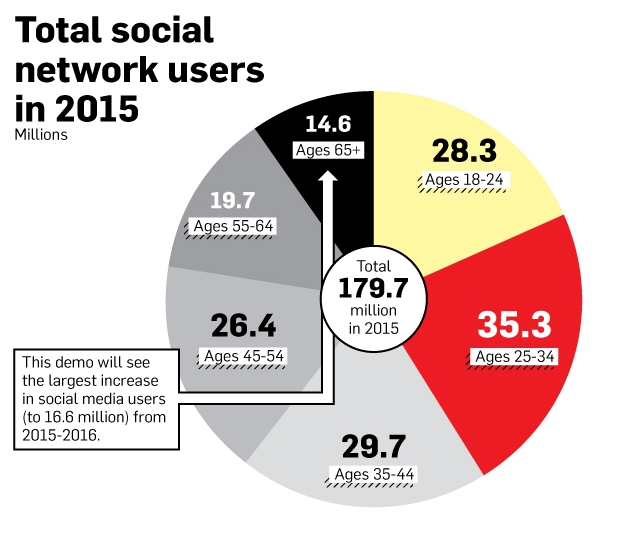Social media has become so ingrained with daily life for consumers and businesses alike, it seems impossible to imagine a company that does not have some sort of online social presence. Yet, the 2016 State of Small Business Report from Wasp Barcode Technologies indicated that 1 in 5 small businesses fall into this category.
What is holding them back? For some, it may be the financial commitment, as 9 percent of companies with between five to 500 employees are not investing revenue into marketing as a whole, and more than half are committing less than 6 percent of their funds to this department. If so little of the revenue is allocated toward marketing, there won’t be much to put toward a social strategy.
54% of small businesses dedicate <6% of revenue to marketing.
It’s time to get in the game
There is a huge potential to reach your audience through social. Nearly 180 million people were using social networks in 2015, and that number is only expected to swell this year. Users range across all ages and all networks, providing a wider array of marketing options no matter what a small business does.

Small businesses have plenty of lucrative options when it comes to finding the best channels to connect with their customers and prospects. The State of Small Business report indicated that Facebook is still garnering the lion’s share of social attention. But it is no longer the only contender for the top – networks like Instagram, Pinterest and Twitter are growing more popular among consumers and businesses alike.
The social media playbook for small biz
With the right approach, a social media campaign can accomplish plenty, including increased brand awareness, lead generation, thought leadership and a strong relationship with the audience. With the right strategy, you can bring more people to your site and your company, which can then become new customers, driving up your revenue.
Simply by creating a targeted Facebook strategy, one of our clients saw a 50 percent increase in referral traffic.
Here are some tips to start you on the right foot:
Stay focused
What makes social successful? Well, consistency for starters. If you are not active on your chosen channels, the ROI is going to be insignificant if anything. One way to ensure the social strategy finds success is to target efforts toward one or two social channels rather than trying to capture the entire social sphere.
More time dedicated to fewer outlets means more frequent, meaningful posts curated for your chosen networks. Spreading efforts too thin across the playing field will turn your social play into an incomplete pass. But, before you can hone your strategy, you need to determine just what that will be.
Choose a goal
To further target social efforts, identify the intention of investing in social marketing. According to the Wasp Barcode survey, the top priority is to bring in new customers. Second most important is increasing the size of the audience by hooking new fans and getting likes.
For many small business marketers, social is the key to having a conversation with customers. This can, in turn, improve brand awareness. One of the biggest selling points for small businesses is that they are more personal than enterprises. For this to be effective, staying active and involved in the social presence is absolutely imperative.
- If you’re using Instagram, share photos that your followers post, even if the images don’t involve you directly. For example,Clothing companies can “regram” images of followers wearing their products.
- Twitter can be great for having a conversation, whether it’s about your service or products, or not. If someone replies to a Tweet, try to follow up. A Tweet mentioning your company may be a question about your products or someone in need of help. Even complaints and bad reviews can turn into something positive.
- Pinterest can be a good tool for demonstrating your industry knowledge. Create boards that focus on more than just your products. If you sell cookware, you might want to create a recipe board or a “kitchen hacks” board.
These are just a few examples of how you can use social, but the options are limitless. Check out the 4 Social trends you need to know this year to get more ideas on how to play the social game and win.




